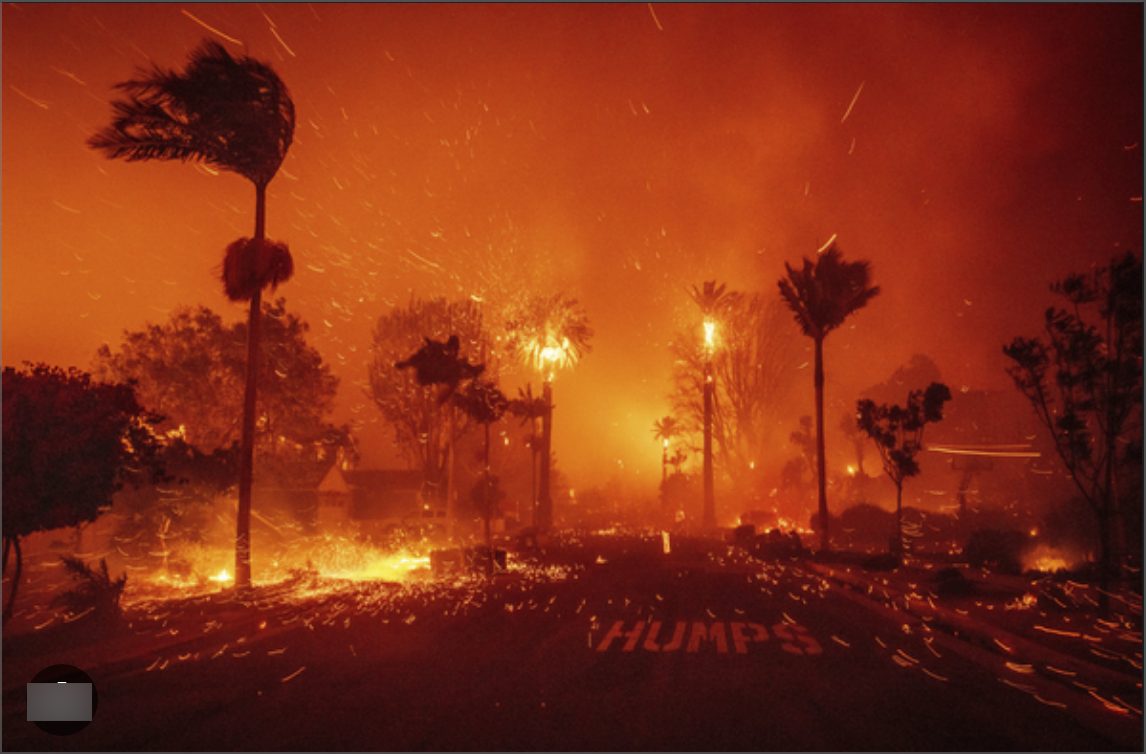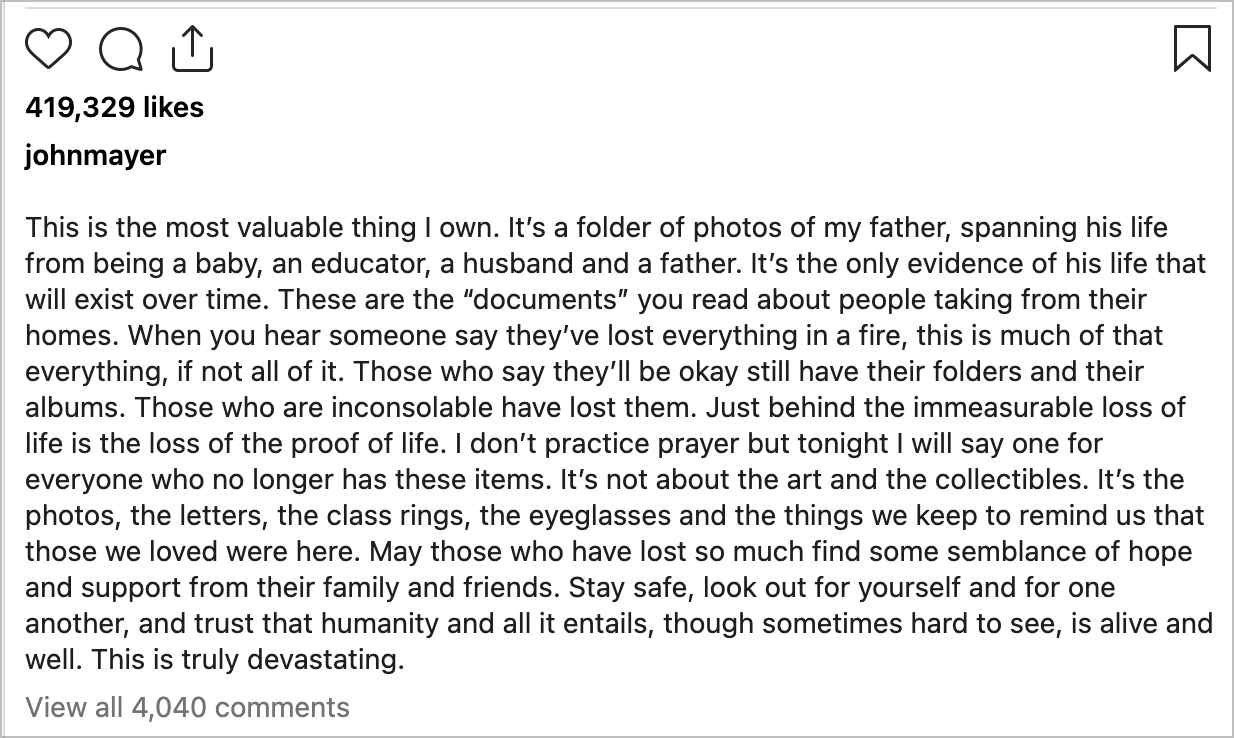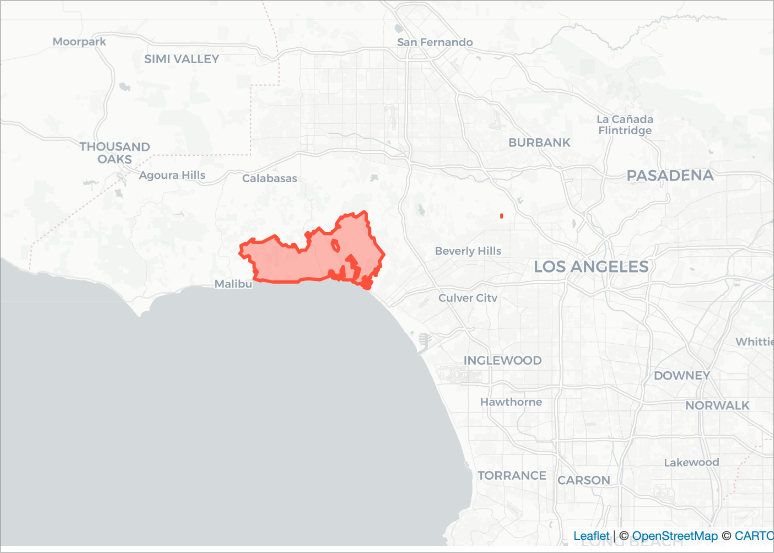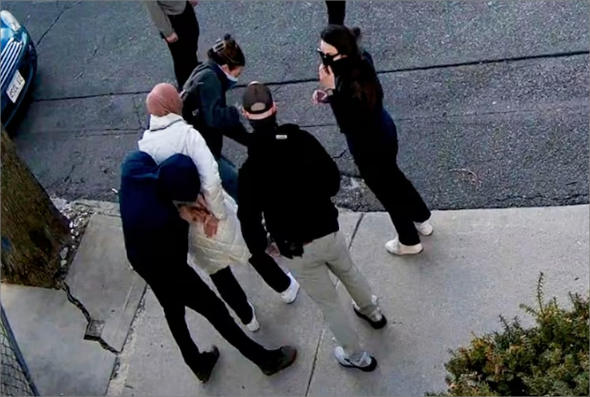California Wildfires Devastation
California wildfires are fueled by dry conditions, climate change, strong Santa Ana winds, and human activity.

Before we get to the what, why and how, I wanted to share this post from musician John Mayer. The loss of life is devastating – that is undeniable. What's harder to understand is what thousands who make it out alive will be going through. Their homes were burned to ashes, and many of the physical reminders of their lives and our loved ones were lost.


Wildfires: A Warning from Climate Change
Usually confined to the hotter months, these fires are highly unusual for January and unprecedented in scale.

While authorities have not yet identified or shared the cause, here’s what we know so far:
BY THE NUMBERS
- 11 people killed
- 10,000 structures destroyed or damaged
- $135–150 billion in damages
What’s Happening and Why?
TL;DR: These fires are fueled by dry conditions, climate change, strong Santa Ana winds, and human activity.
KEY FACTORS
- Dry Conditions and Drought
- Months of drought in Southern California have left vegetation drier than almost any year on record. Grasses and sagebrush have turned into perfect kindling.
- Santa Ana Winds
- Strong, dry winds moving from the desert to the coast have further reduced humidity and dehydrated carry. Gusts of up to 100 mph carry embers ahead of the flames, igniting new fires.
- Climate Change
- Jet Stream Disruptions: Climate change has altered high-altitude air currents, creating dry, windy conditions.
- Extreme Weather: Unpredictable lightning storms have delivered tens of thousands of strikes in dry landscapes, sparking fires.
- California now experiences 78 more “fire days” each year than 50 years ago, even in months like January, which used to be cold and wet.
- Human Factors
- Downed power lines from high winds: A 2022 audit revealed utility companies’ wildfire plans were “seriously deficient"
- Cigarette butts, vehicle sparks, fireworks, or debris-related causes
- Arson
FROM THE EXPERTS
- Stephen Pyne, Arizona State University:
- The extraordinary winds are the main driver – literally. These are near-hurricane force winds. No firepower on Earth can near-hurricane-force the flames; they quickly blow past any initial responses fire crews can make…”
- “A primary mechanism for fire spread is not a tsunami of flame: it’s a blizzard of embers. The embers can kindle buildings well ahead of the flaming front. The structures then become a primary fuel, and the fire spreads as an urban conflagration, leaping from structure to structure.”
- “Post-fire cleanup will be messy, long and expensive. Contemporary houses are filled with plastics, synthetics and electronics that can be toxic. Rebuilding will be a nightmare – it’s hard to see how insurance can pay; even state-supported supplements will fall short.”
- Jennifer Balch, University of Colorado:
- “Fires have gotten faster. The big culprit we’re suspecting is a warming climate that’s making it easier to burn fuels when conditions are just right.”
BLAME GAME
Amid the devastation, the political blame game rages. Leaders are debating whether poor forest management or insufficient climate action is to blame.
President-elect Donald Trump and Elon Musk point fingers at Democrats. Trump criticized California Gov. Gavin Newsom, calling him “incompetent” and accusing him of limiting water supplies to protect endangered species. Newsom denies this, but frustration among Californians is growing.
THE BIGGER PICTURE
This isn’t just about California—climate change threatens all of us. Wildfires today could mean hurricanes, droughts, or other extreme weather tomorrow.
The science is clear: we need urgent action on multiple fronts to combat climate change and its ripple effects.
- Mitigating Climate Change: Reduce greenhouse gas emissions and prepare for climate-driven disasters.
- Improving Resource Management: Address water shortages, boost firefighting infrastructure, and rethink resource allocation.
- Supporting Affected Communities: Offer shelter, financial aid, and mental health support to those displaced.
- Community Education: Stay informed, follow evacuation orders, and push for systemic change to prevent future tragedies.




